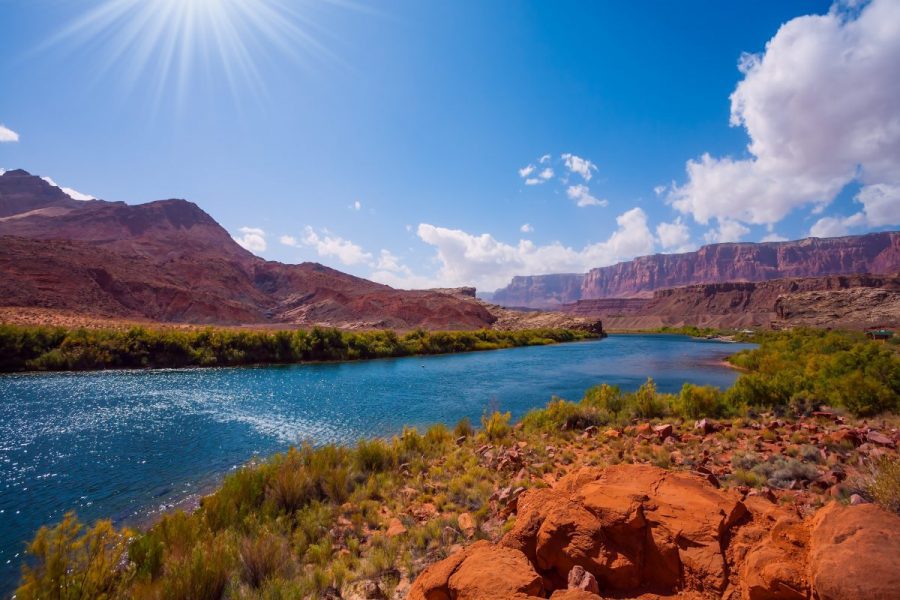Rethinking Centuries-Old Water Rights in the American West: Part II

This is part two of a two part series. You can read part one, Rethinking Centuries-Old Water Rights in the American West: Part I here.
The Times They Are A-Changin’
As the drought plaguing the American West endures for a third year, something unprecedented has occurred in the California state Senate: a written recognition that California’s water rights are over-allocated.
In May 2022, a Senate subcommittee published a policy paper that proposed a new Senate Climate Budget Plan. The paper recognized that the state has always focused on emergency response to drought, rather than making fundamental changes to the water system “to realign demand, supply, and the flexibility of the system to address long-term climate impacts.”
The allocation of water in California has been administered by the State Water Board’s Division of Water Rights since 1914. The State Water Board confirms that water rights allocated in California exceed the average amount of water that is usually available. However, that does not necessarily mean that more water is used than is available. There are several complexities that state officials take into consideration when reviewing water rights and use data, which are explained on the State Water Board’s website.
Caveats aside, this admission reinforces the Senate subcommittee’s point: the allocation of water rights is out of sync with water availability. Water use has outpaced the water rights legislation that harkens back to the days of mining claims and the Prior Appropriation Doctrine, or “first in time, first in right” system.
Climate Change, State Control, and Vanishing Water Supplies
The proposed climate plan includes a $7.5 billion water and drought package with $2 billion earmarked to rebalance state water supply and water rights. The policy paper puts it plainly: “California’s water rights are over-allocated and climate change has created an urgent need to protect and enhance flows.”
The plan to reevaluate and adjust water rights and supply is for the state government to acquire land with senior water rights from “willing sellers.” Essentially, the government would gain control of water rights that are currently privately held by purchasing them from landowners. The idea here is to create greater state control over water use and allocation in order to protect and preserve watersheds in the public interest.
Some farming communities are facing severe water shortages for the first time. The western Sacramento Valley has relied on federally-managed water supplies from Lake Shasta, which have virtually been guaranteed since 1964. In a typical year, this region may receive three times more water than Los Angeles and San Francisco. But in 2022, irrigation districts agreed to receive only 18 percent of their water deliveries, calling the viability of agriculture into question for many farmers. Under this arrangement, farmers with less senior water rights may get nothing at all.
“For decades, water wars have pitted growers and ranchers against nature, north against south,” wrote journalist Rachel Becker in Cal Matters. “But in this new California, where everyone is suffering, no one is guaranteed anything.”
Community-Based Plans Deviate from the Legal Norm
In some regions, state regulators are working with senior water rights holders to develop new water management plans that establish more equitable water sharing within communities. These initiatives invite voluntary participation and accountability for the benefit of all water users without taking water rights away from the landowners who hold them.
In Nevada, water laws are based on seniority, but a fight over groundwater rights in Diamond Valley led the Nevada Supreme Court to set a new precedent. The Court ruled that when water supplies are depleting, the state engineer can deviate from preexisting water laws to regulate Diamond Valley’s water. The noteworthy element here is not state regulation, but that farmers actually drafted and approved of this groundwater management plan. A community came together to find a solution, part of which was granting greater oversight to the state.
A similar plan has arisen in California’s Russian River watershed in Sonoma and Mendocino counties, home to some of the country’s premier wine regions. In June 2022, the State Water Resources Control Board approved an agreement that allows senior water rights holders to share their supply with junior water rights holders. During drought, under California’s century-old legislation, junior rights may be curtailed while senior rights remain whole. The new voluntary framework creates a more equitable system in which neighbors support each other in hard times.
Under the agreement, senior rights holders keep their water rights but hand regulatory control to a five-person board of community members, which may then reallocate water use across senior and junior rights holders within the watershed. Senior rights holders will voluntarily forego some of their water in order to help sustain junior rights holders.
Working together, growers who might have otherwise lost their water supply will be able sustain their crops as the drought surges on. Although this plan may not be a solution to dwindling water supplies within the watershed, it is a firm step toward creating a more equitable division of resources within an agricultural community. This collaborative spirit will carry us into the next era of farming on our changing planet.
Smart irrigation technology like Lumo will give communities the transparency and accountability necessary to engage in innovative agreements like these through better water management and tracking. To learn more, contact us here or email us at [email protected]